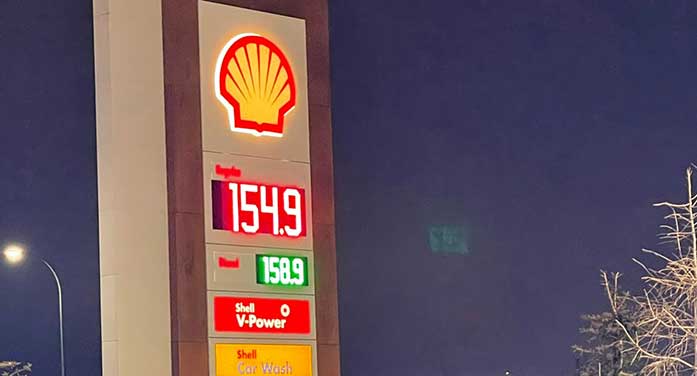 The oil markets are likely to face another round of supply disruptions. Most indicators point to a bullish trend in the near future.
The oil markets are likely to face another round of supply disruptions. Most indicators point to a bullish trend in the near future.
After recently announcing the release of over 180 million barrels of crude oil from its strategic reserves (SPR) over the next six months to cool down the markets, the United States government on Thursday announced plans to buy crude to replenish its SPR.
U.S. President Joe Biden has already tapped into the nation’s reserves twice in recent months. The latest withdrawal will bring the reserves to their lowest level in almost 40 years, reports suggested.
So the U.S. government intends to buy crude to refill its reserves, putting more pressure on the already fragile demand/supply balance. To be fair, while the purchases could begin in the fall, the deliveries won’t occur until later, and the markets are taking this into account.
Possible European sanctions on Russian oil are also impacting the market psyche. In its bid to strangle the Russian economy, the European Union intends to move toward an agreement and impose an embargo on oil imports from Russia.
The EU is reportedly discussing plans for new sanctions on Russia, including an embargo on crude oil within six months. The proposal, which needs unanimous backing by the 27 EU countries, also includes phasing out imports of Russian refined products by the end of 2022 and a ban on all shipping and insurance services for the transportation of Russian oil, Reuters reported.
This would result in another supply squeeze and a price spike. “The looming EU embargo on Russian oil has the makings of an acute supply squeeze. In any case, OPEC+ is in no mood to help out, even as rallying energy prices spur harmful levels of inflation,” Reuters quoted PVM Oil Associates analyst Stephen Brennock as saying.
In the meantime, and despite pleas from the United States, the Organization of Petroleum Exporting Countries (OPEC) is maintaining a conservative output policy. It’s in no mood to open taps to fill in any gaps created by the absence of Russian crude from the markets.
In a ministerial meeting that lasted only 13 minutes, OPEC+ opted to increase its June 2022 production target by 432,000 barrels per day (bpd), avoiding any talk about sanctions on Russia and indicating the global supply/demand picture is balanced.
Falling out with Russia could mean the end of OPEC+. OPEC members seem to realize this and aren’t anxious for it to happen – at least right now.
But even if OPEC wanted to move to higher production levels, could it increase its output enough?
Despite OPEC’s announcement to lift output by 432,000 bpd in June, analysts expect the actual production rise to be much smaller due to capacity constraints. OPEC managed an increase of just 10,000 bpd in April, indicating the group’s difficulty in lifting output to match its stated plans.
“There is zero chance of certain members filling that quota as production challenges impact Nigeria and other African members,” Reuters quoted Jeffrey Halley, senior market analyst for the Asia Pacific at OANDA.
Can Canada fill the gap if the world quits Russian oil? by Rashid Husain Syed
It won’t be easy because Canada lacks the infrastructure to ship oil or gas to Europe directly
According to S&P Global Platts, only two countries are capable of bringing more idled production back on line – Saudi Arabia and the United Arab Emirates. But even their spare capacity will be down to 1.6 million bpd by July.
Another factor impacting the crude oil markets is the passing of the NOPEC antitrust bill by a U.S. Senate committee. The bill, presented with bipartisan support, would strip away the immunity that protects OPEC countries and Middle Eastern national oil companies from lawsuits. High gasoline prices and inflation have compelled U.S. lawmakers to take aggressive action, and the bill, if adopted, could expose OPEC+ to lawsuits for collusion on boosting oil prices.
There seem to be very few bearish factors on the horizon for the crude oil market.
Strict COVID-19 curbs in China appear to be creating some obstacles for the world’s second-largest economy and the world’s top crude importer. Declining oil demand is a concern due to COVID-related shutdowns in China. The lockdowns have taken their toll on the economy, especially the services sector.
“Chinese oil demand has been down 1.5 million barrels per day” due to the lockdowns, according to S&P Global Inc. vice-chair Daniel Yergin. But he emphasized that China is expected to stage a strong rebound, which would affect all commodity prices.
So gas prices are approaching $2 a litre at many Canadian gas stations. Diesel surpassed the $2-per-litre barrier days ago, impacting the supply chain and the prices of virtually everything else.
For low-income Canadians, this is a crisis. Government intervention, perhaps by reducing gasoline taxes, needs to happen quickly.
Toronto-based Rashid Husain Syed is a respected energy and political analyst. The Middle East is his area of focus. As well as writing for major local and global newspapers, Rashid is also a regular speaker at major international conferences. He has provided his perspective on global energy issues to the Department of Energy in Washington and the International Energy Agency in Paris. For interview requests, click here.
The opinions expressed by our columnists and contributors are theirs alone and do not inherently or expressly reflect the views of our publication.
© Troy Media
Troy Media is an editorial content provider to media outlets and its own hosted community news outlets across Canada.


